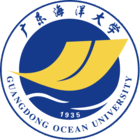详细信息
文献类型:期刊文献
英文题名:Oyster cultivation regulating seasonal nitrate cycling in the estuarine water
作者:Zhou, Xin[1]; Song, Zhiguang[2]; Chen, Chunqing[1,3]; Zhu, Qingmei[3]; Chen, Fajin[1,3]
机构:[1] College of Chemistry and Environment, Guangdong Ocean University, Zhanjiang, 524088, China; [2] Key Laboratory of Beibu Gulf Environment Change and Resources Utilization of Ministry of Education, Nanning Normal University, Guangxi, Nanning, 530001, China; [3] College of Ocean and Meteorology, Guangdong Ocean University, Zhanjiang, 524088, China
年份:2025
卷号:220
外文期刊名:Marine Pollution Bulletin
收录:EI(收录号:20252818762240)、Scopus(收录号:2-s2.0-105010188762)
语种:英文
外文关键词:Analytical geochemistry - Atmospheric chemistry - Barium compounds - Denitrification - Elementary particle sources - Estuaries - Genes - Isotopes - Nitrification - Nitrogen oxides - Nitrogen removal
外文摘要:Effects of oyster cultivation on nitrate (NO3?) cycling exhibit discrepancies between model results and filed studies, necessitating seasonal investigations to clarify these differences. By combining geochemical analysis including water chemistry, NO3? dual isotopes (δ15N-NO3? and δ18O-NO3?), and N-cycling functional genes (nitrifier genes and denitrifier genes), this study found that NO3? cycling is regulated by oyster growth activities. During the oyster's seeding periods, oyster cultivation insignificantly affected NO3?, and NO3? displayed a conservative pattern in the estuarine waters. Bayesian mixing model showed that manure and sewage were primary NO3? sources (>50 %), followed by atmospheric deposition (23 %). During the oysters' breeding periods, suspended particulate matter accumulation and relatively high abundance of AOA amoA gene in particle-associated communities promoted particulate matter associated nitrification. In the oysters' high filter-feeding periods, NO3? consumption (assimilation) occurred in surface water and NO3? production (nitrification) occurred in bottom water, as supported by increased nitrifier abundances. The increased nitrification was related to the consumption of NO3?, and thus gives rise to the remaining NH4+ nitrified to NO3?. In the oysters' intensive filter-feeding periods, intensive nutrients demanding by oyster growth caused significant decrease in NO3? concentrations in estuarine waters. However, massive discharge of oyster feces into surface sediments may stimulate partial denitrification in the sediments and nitrification in the waters, leading to the decoupling of δ15N-NO3? and δ18O-NO3? against ln [NO3?]. Overall, nitrification and partial denitrification in the estuarine ecosystems driven by oyster cultivation may be conducive to the production of nitrous oxide. ? 2025 Elsevier Ltd
参考文献:
![]() 正在载入数据...
正在载入数据...


